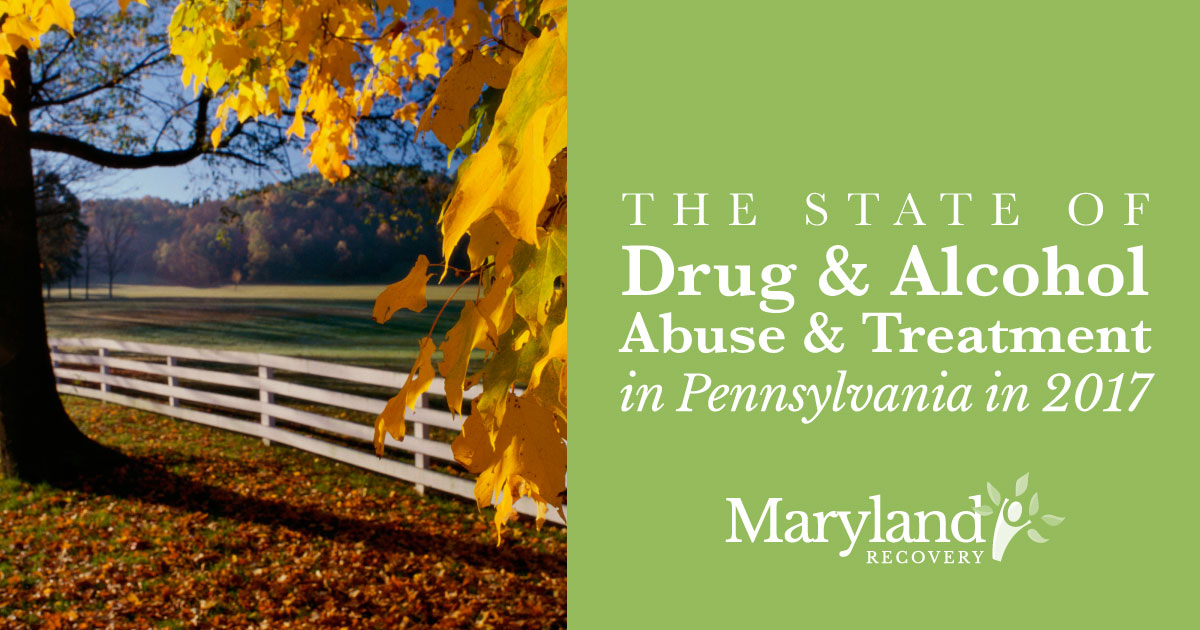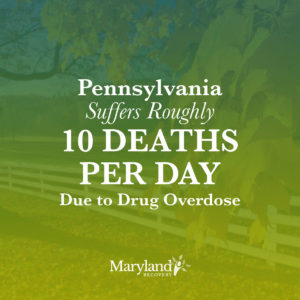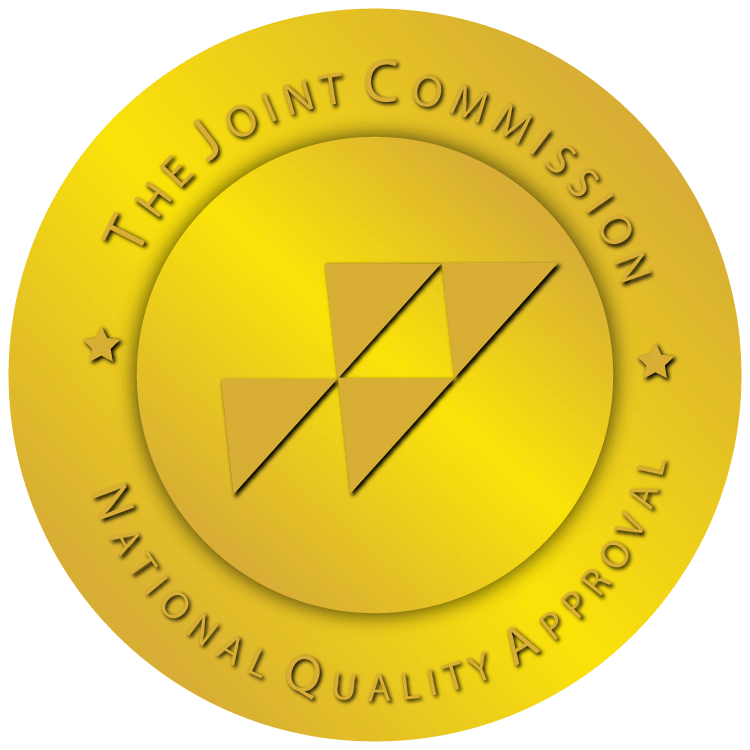 Over the last two decades, the United States has experienced a widespread drug epidemic spanning all regions and all walks of life. Every state has unique considerations when it comes to drug abuse, and Pennsylvania displays several worrisome trends.
Over the last two decades, the United States has experienced a widespread drug epidemic spanning all regions and all walks of life. Every state has unique considerations when it comes to drug abuse, and Pennsylvania displays several worrisome trends.
Maryland Recovery provides substance abuse recovery services and counseling to patients from all over the United States, and we believe it’s important for Pennsylvania residents to understand the substance abuse issues facing their state.
Pennsylvania Drug Abuse Trends
Between 1990 and 2015, deaths from drug overdoses have increased threefold across the country on average. In 2015 alone, there were 16.3 deaths per 100,000 residents due to drug overdoses.
That same year, Pennsylvania reported more than 3,500 deaths, for a rate of 26.3 overdose deaths per 100,000 residents, which was sixth-highest in the nation. Pennsylvania’s drug overdose death rate jumped 30 percent in just one year.
One of the most troublesome aspects of the drug problem that it affects all age groups and demographics. Although many people hold misconceptions about the areas in which one is most likely to find drug abuse problems, some of the most severe issues in the state have arisen in seemingly unlikely places:
- Rural Pennsylvanians have witnessed widespread addiction and drug crime.
- Drugs find their way to rural areas from the nearby metropolitan areas of Philadelphia, Washington, D.C., Baltimore, Pittsburgh and Reading.
Opioid and Heroin Use Becoming More Common
Local emergency responders have relied heavily on the anti-overdose drug naloxone. Naloxone can reverse the effects of opioid overdose by attaching to the victim’s opioid receptors in the brain and flushing away the opioids. Some paramedics have reported using naloxone to revive an unresponsive overdose victim more than 10 times in just the past year.
Part of the reason the opioid crisis has reached such critical proportions is the fact that so many Americans rely on prescription painkillers, namely opioids. Opioids are very effective painkillers, but also extremely addictive. Many patients begin their substance abuse with normal use of prescribed painkillers, but they quickly develop dependencies.
Heroin is a fraction of the price of illegal opioid pills on the street, and once addiction has set in, heroin appears as an attractive option to maintaining an addiction. As heroin floods rural Pennsylvania from the larger cities, people at high risk of developing addictions have easy access to this powerful drug.
How the State Is Addressing the Issue
 Pennsylvania lawmakers have committed several resources and started many initiatives to help curb the high overdose death rate in the state.
Pennsylvania lawmakers have committed several resources and started many initiatives to help curb the high overdose death rate in the state.
With a rate soon eclipsing 10 deaths per day from drug overdoses, Pennsylvania lawmakers recently unveiled a plan to establish 45 “Centers of Excellence” in the state. The substance abuse treatment centers will be coordinating recovery services within existing medical communities such as hospitals, behavioral health offices and addiction clinics.
Instead of relying on traditional methods that have so far proven ineffective against the growing number of overdose deaths, these Pennsylvania Centers of Excellence will help drug users on an individual level. Each addiction case requires individualized attention, as no two substance abuse cases are alike.
Providing effective treatment that leads a patient to lasting sobriety requires knowing the person on a personal level, what his or her triggers are, and the role his or her mental health plays in the cycle of addiction.
Pennsylvania’s Trouble with Other Drugs
Although the opioid crisis continues to be the most pressing substance abuse issue in Pennsylvania, law enforcement and state policymakers have also witnessed a sharp increase in the use of other drugs.
Although prescription opioid painkillers continue to be the most statistically dangerous drugs, alcohol use among teens, higher rates of marijuana use, and drug-related crime are on the rise in PA.
Marijuana Use Up Among Most Age Groups
Statistics from the National Survey on Drug Use and Health show that between 2010 and 2015, marijuana use within the year prior to taking the survey increased from 10 percent to 12.4 percent among all respondents.
However, teen marijuana use slightly dropped during that time frame. Teens also reported a lower rate of marijuana use within the past month of taking the survey than other age groups did. While marijuana use is relatively safer than other, more harmful drugs, marijuana-related crime is still a major issue in Pennsylvania.
Alcoholism Still Prevalent in PA
Alcohol abuse continues to plague Pennsylvania, with alcohol use and alcoholism rates placing among the highest in the nation. Northeastern Pennsylvania reports some of the highest rates of alcohol abuse and alcohol-related crime in the state.
Since it is legal for adults older than 21 to purchase and consume alcohol, it appears that too few people respect the addictive and destructive potential of the substance. Many addiction treatment experts consider alcohol the most dangerous substance, and trends in Pennsylvania seem to support this claim: Underage drinking continues to be a problem, and a recent bust in York, PA led to underage drinking citations for 218 partygoers.
Seek Treatment Before It’s Too Late
The country is clearly dealing with an opioid epidemic, and while these statistics are important and show the widespread effects of substance abuse, they do not shed light on the individual struggles thousands of people are facing. Prevention and awareness are two of the most important weapons in the fight against growing substance abuse.
Maryland Recovery wants to remind our neighbors in Pennsylvania to seek counseling and treatment for substance abuse before it’s too late. Legal prescriptions and typical experimentation can have disastrous consequences, so reaching out for help sooner rather than later can save lives.
Learn How Holistic Treatment Can Be Part of the Solution to Drug Addiction
Reviewed by Christopher Schwartfigure MS, LGPC, CAC-AD








